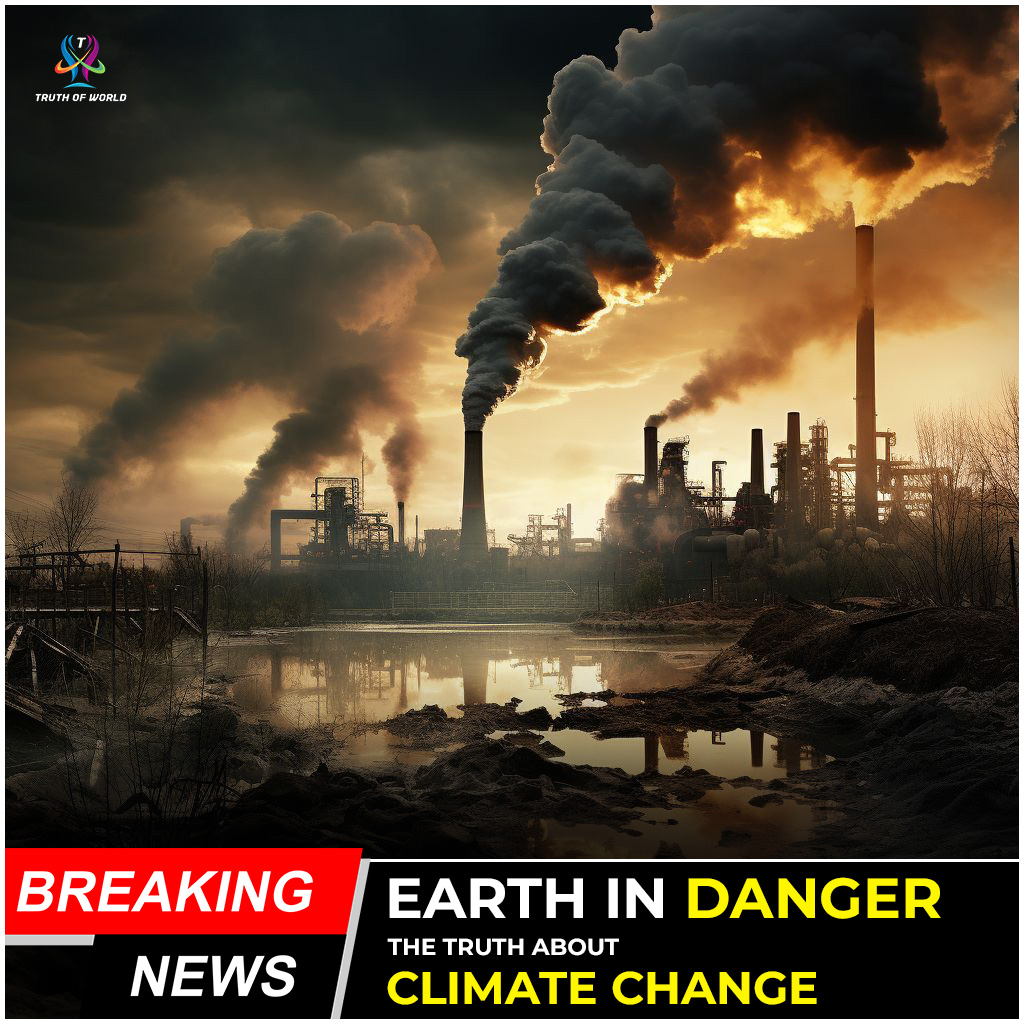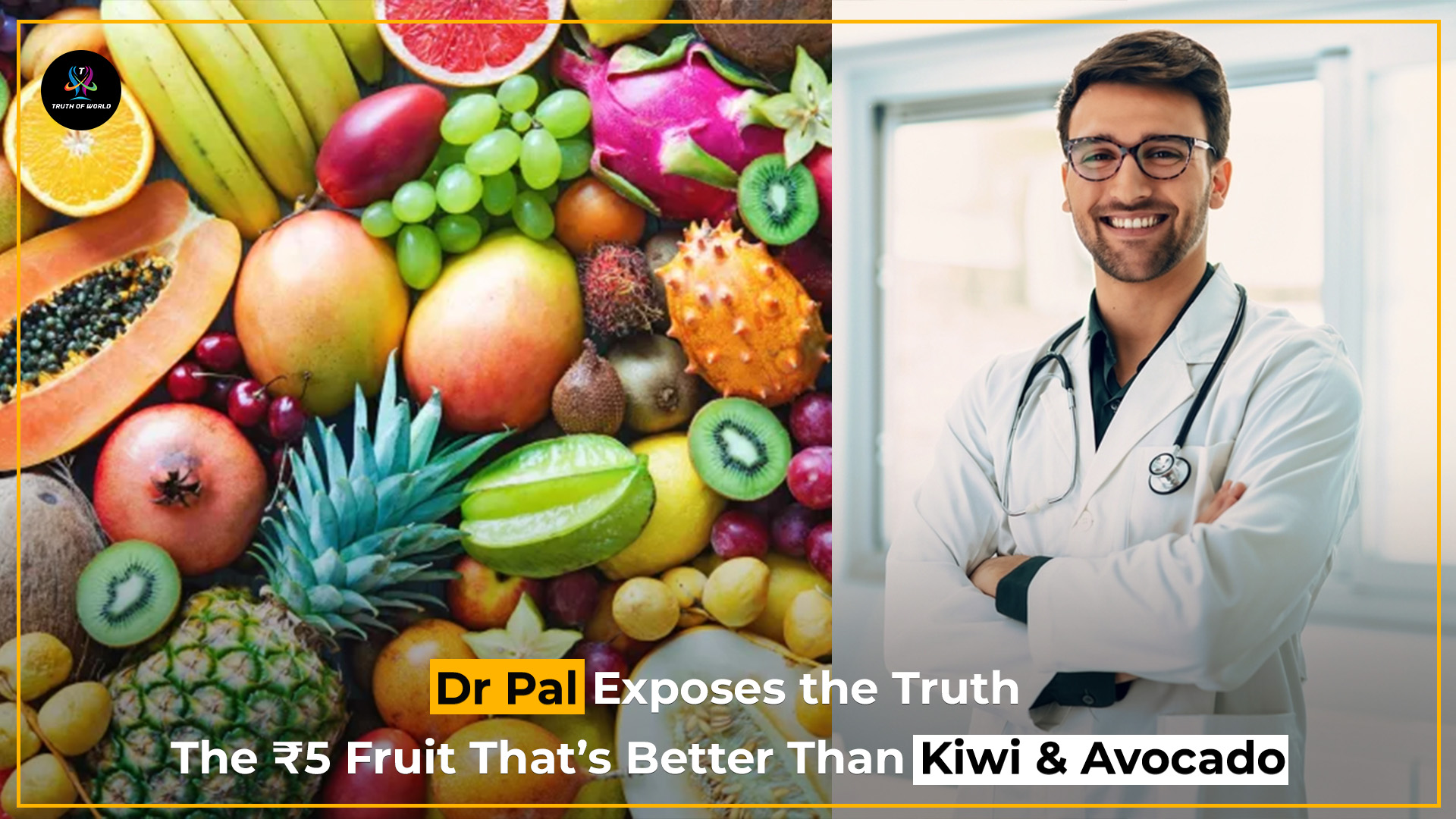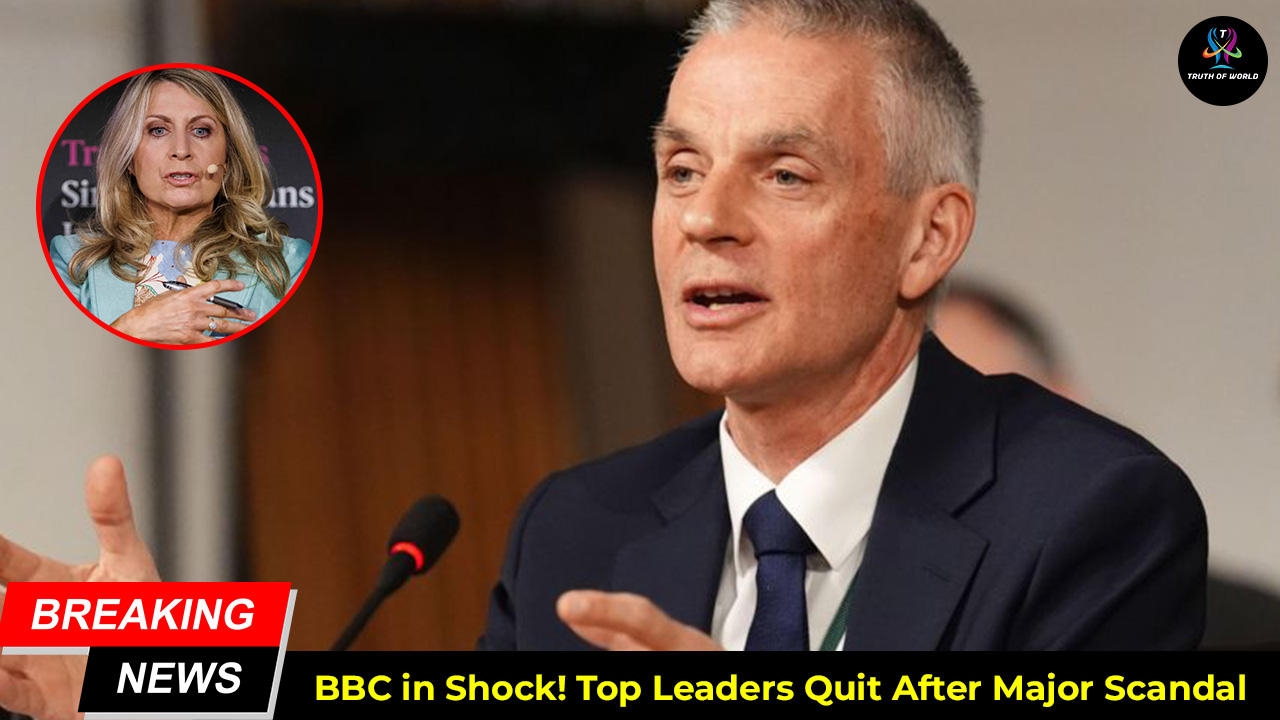Introduction: Why Climate Change Matters
Climate change is not just a scientific term – it is a reality that affects every corner of the world. From melting glaciers in the Arctic to rising sea levels threatening coastal cities, the planet is experiencing rapid transformations. Scientists, policymakers, and even common people are now realizing that climate change is the most urgent issue of the 21st century.
But what exactly is climate change? Why is it happening, and how does it impact our environment, health, and future? In this article, we will take a deep dive into the causes, effects, and solutions of climate change in a way that everyone can understand.
What is Climate Change?
Climate change refers to long-term shifts in temperatures and weather patterns, primarily caused by human activities such as burning fossil fuels, deforestation, and industrial pollution. While natural changes in climate have always occurred, the speed and intensity of current global warming are unprecedented.
- Global Warming: The average temperature of Earth has increased by more than 1.2°C since the pre-industrial era.
- Greenhouse Gases: Carbon dioxide (CO₂), methane (CH₄), and nitrous oxide (N₂O) trap heat in the atmosphere, leading to the greenhouse effect.
- Human Influence: Over 90% of scientists agree that climate change is primarily human-driven.
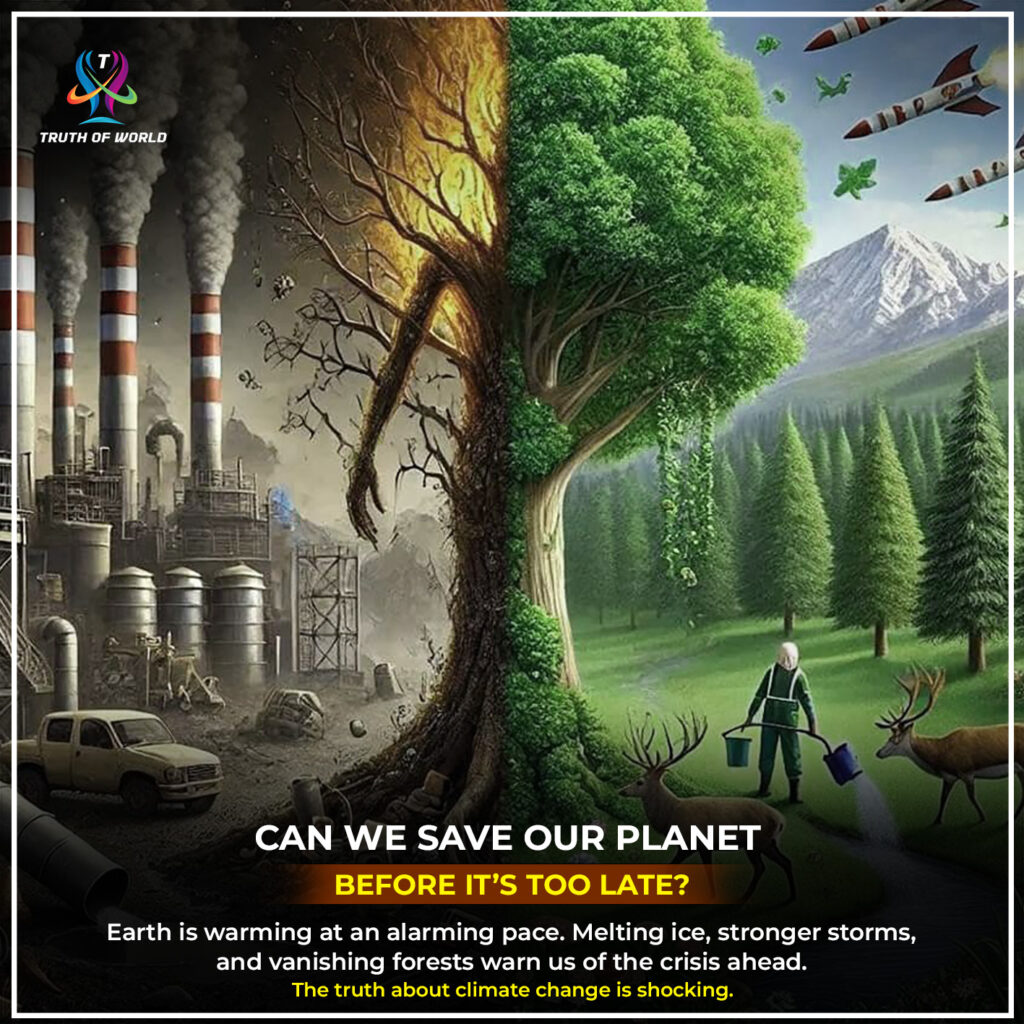
Causes of Climate Change
Climate change is not caused by a single factor – it is the result of multiple human and natural activities. Let’s break it down:
1. Burning Fossil Fuels
Coal, oil, and natural gas are used for electricity, transportation, and industries. These release billions of tons of CO₂ every year.
2. Deforestation
Forests act as natural carbon sinks. Cutting them down not only reduces oxygen supply but also increases carbon in the atmosphere.
3. Industrial Emissions
Factories release greenhouse gases and toxic pollutants that directly contribute to warming.
4. Agriculture
Livestock farming produces methane, one of the most dangerous greenhouse gases. Fertilizers also release nitrous oxide.
5. Natural Factors
Volcanic eruptions, solar activity, and ocean currents also affect climate, but their role is minimal compared to human activities.
Effects of Climate Change on the Environment
1. Rising Sea Levels
Melting glaciers and polar ice caps are causing sea levels to rise. Coastal cities like Miami, Mumbai, and Jakarta face the risk of sinking.
2. Extreme Weather
Hurricanes, floods, droughts, and wildfires are becoming more frequent and intense due to global warming.
3. Ocean Acidification
Excess CO₂ is absorbed by oceans, making water acidic. This threatens marine life, including coral reefs.
4. Loss of Biodiversity
Many species are struggling to adapt to changing temperatures. Some animals, like polar bears and tigers, are at the edge of extinction.
5. Health Impacts
Rising temperatures increase the spread of diseases, heat strokes, and respiratory problems caused by air pollution.
Climate Change Around the World
Asia
Countries like India, Bangladesh, and China are highly vulnerable due to dense populations and rising pollution. Floods, heatwaves, and air quality issues are major threats.
Africa
Droughts and desertification are affecting agriculture, leading to hunger and migration crises.
North America
Wildfires in California, hurricanes in the Gulf of Mexico, and melting glaciers in Alaska show the diverse impacts of climate change.
Europe
Heatwaves are becoming common, affecting elderly populations. Many European countries are also investing heavily in green energy.
South America
The Amazon rainforest, known as the “lungs of the Earth,” is shrinking rapidly due to deforestation and fires.
Australia
Frequent bushfires, coral bleaching in the Great Barrier Reef, and water scarcity highlight the severity of climate impacts.
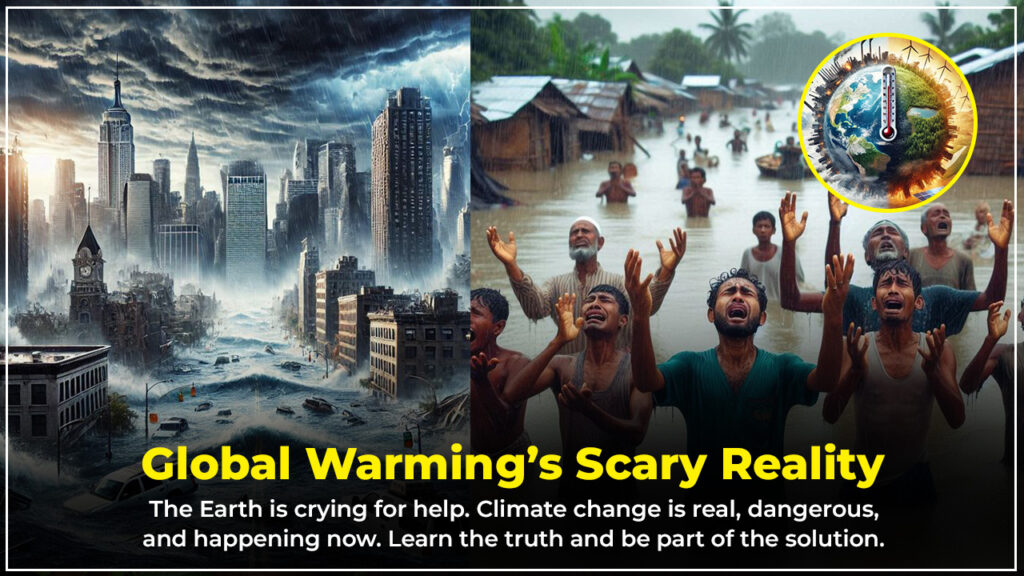
Solutions: What Can We Do to Fight Climate Change?
1. Renewable Energy
Switching from fossil fuels to solar, wind, and hydropower reduces emissions significantly.
2. Reforestation & Afforestation
Planting trees is the simplest yet most effective way to absorb CO₂.
3. Sustainable Agriculture
Organic farming, reducing food waste, and adopting plant-based diets can reduce methane emissions.
4. Green Transportation
Electric vehicles, bicycles, and public transport are eco-friendly alternatives.
5. Global Cooperation
Countries must work together through agreements like the Paris Climate Accord to set targets and cut emissions.
Role of International Organizations
- United Nations (UN): Runs climate summits like COP (Conference of Parties).
- World Health Organization (WHO): Studies the health impacts of climate change.
- Intergovernmental Panel on Climate Change (IPCC): Provides scientific data and reports.
Role of Individuals – What You Can Do
Climate change is not just about governments and organizations. Every individual can contribute:
- Reduce energy consumption (switch off unused devices).
- Use eco-friendly products.
- Support recycling and waste management.
- Promote awareness in your community.
The Future if We Ignore Climate Change
If no action is taken, the world will face devastating consequences by 2050:
- Coastal cities may submerge.
- Food and water shortages will rise.
- Millions of people may become climate refugees.
- Extreme heat may make some regions uninhabitable.
Conclusion: A Call for Urgent Action
Climate change is not a distant problem – it is happening now. The decisions we make today will decide whether future generations live in a safe, sustainable world or face an environmental catastrophe.
Each one of us has a role to play – from governments and industries to individuals. The fight against climate change is not optional; it is a necessity for survival.
About the Author
Hi, I’m Ronak Sharma, a content creator who loves writing about world issues, technology, and the environment. I started this blog to share knowledge in a way that feels simple and useful for everyone. Apart from writing, I work as a 3D artist and also create videos on YouTube. I believe that learning and sharing ideas can bring a positive change, and that’s what keeps me motivated to write.
